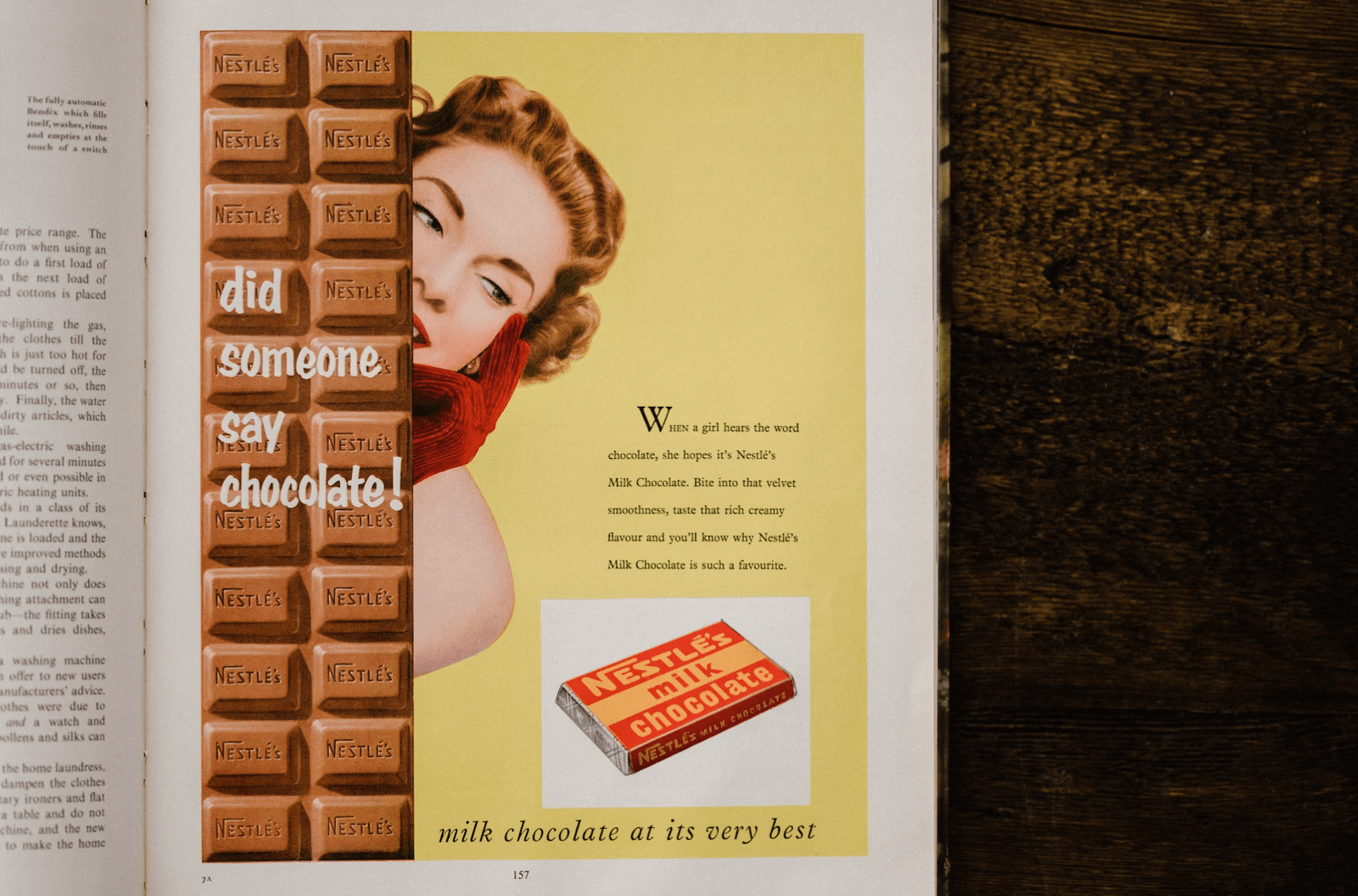Fixing Your Leaky Sales Funnel
“Nerds might wish that distribution could be ignored and salesmen banished to another planet. All of us want to believe that we make up our own minds, that sales doesn’t work on us. But that’s not true. Everybody has a product to sell – no matter whether you’re an employee, a founder, or an investor. It’s true even if your company consists of just you and your computer.
Look around. If you don’t see any salespeople, you’re the salesperson” – Peter Thiel
If you’re a startup, you’re going to need to develop a system for meeting, serving and converting customers.
As a founder, you’re the designer of these systems, but they need to work without you being involved in every conversation, or else you become the bottleneck.
One of the hardest things about sales is that you can do a great job of 80% of the process, but a bad experience in that other 20% can massively undermine your results.
It might be that you’re hard to find, overwhelming, underwhelming, too distant or too confrontational, hard to understand or slow to respond.
And worst of all, you might have no idea that it’s a problem.
If there’s something you’re doing that is scaring away customers, would you want to know about it?
It’s highly unlikely that you’ll design a great system by accident - they need deliberate attention, and will need to be updated/improved each year.
Customers change, products change, competitors change, so you’re going to be constantly changing too.
When we think about an individual customer, we use tools like a customer journey map, but for thinking about the next 10,000 customers, it’s helpful to think about your “funnel”.
What Is A Funnel?
A funnel describes all the stages of a sales process, and helps you measure how many customers opt-in or opt-out of each step.
For example:
· 1,000 people might walk past a café in an hour
· 250 might glance in the window
· 80 might stop to read the menu
· 30 might step inside
· 27 might order a coffee
· 15 might order a coffee and a meal
There’s nothing “wrong” with those numbers, and a café couldn’t possibly handle 1,000 customers per hour anyway.
But we can look at each of these steps and see if there might be easy ways of boosting them higher:
· Positive press coverage might lead more people to seek out this specific cafe
· A sandwich board sign might increase the number of people glancing in the window
· A bigger, brighter menu might entice more readers
· Nicer lighting might encourage more customers to step inside
· A neater arrangement of snacks might encourage more purchases with a coffee
· A new chef might increase the number of customers who return for lunch
Each of those improvements might be able boost the numbers at the next stage, and that might result in the café attracting 24 customers ordering a coffee and a meal per hour.
Funnels are an oversimplification, but they’re a helpful starting point for finding new experiments for boosting sales and delighting customers.
Funnels get narrower as they go along, and for good reason.
Not everyone who engages with our business will end up buying something, and that’s ok.
You won’t be everyone’s cup of tea; some will think you’re too expensive or too niche, too basic or too slow.
That’s ok, and in most cases it’s helpful – your team won’t have time to personally serve lots of casual browsers who will never become paying customers.
The real tragedy is when a good customer wants to proceed, but gets put off by a sales process that is slow, confusing, annoying or pushy.
You’ve no doubt experienced this for yourself – the frustration, the disappointment, closing a browser tab or walking out of a store because you weren’t getting what you needed.
Maybe you got further in to the process, only to experience “sticker shock” at how much you’d need to spend or how long you’d need to wait.
Let’s not do that to your customers.
The Main Parts Of A Funnel
You can get as detailed or sophisticated as you like, breaking the process into lots of little steps, but the four big ones are known as AIDA:
Awareness – The moment a customer registers that you exist and knows what you do.
Interest – The moment a customer realises that you might have something relevant and valuable to offer them.
Desire – The moment when a customer believes that you are the best available option for them, and that they are excited and ready to proceed.
Action – The moment when a customer makes a purchase or makes a commitment.
You can also map the work you’re doing before the customer is aware of your company, or map their loyalty and re-orders after their initial purchase.
AIDA is a great starting point, so let’s look at it in more detail…
Awareness
"Do you think an advertisement can sell if nobody can read it? You cannot save souls in an empty church" - David Ogilvy
A customer can’t buy from you if they don’t know who you are, or what you are good at doing.
They’re going to need to connect your name with a category and some sort of promise.
There are a number of ways in which a business can make itself known:
You can bombard the entire market with your name and message, like what TV and radio ads used to do with their catchy jingles and repetitive ads.
This used to work really well, but has become prohibitively expensive for a lot of smaller brands.
It’s generally more effective to target specific customers, or people who will appreciate hearing from you.
You can meet customers at the right moment, by setting up your messages at the precise moment when they realise they need what you offer.
e.g. being a top result on Google for a particular query or keyword, paying per-person who clicks on your ad.
This requires some creativity, an attempt at walking in a customer’s shoes to understand when and where they will be most receptive.
You can build a reputation with other customers and users of your work, who in turn will recommend you to their friends and family when they have a need in the future.
This is far more credible than a paid advertisement, but it takes a long time to build a good reputation (and can be ruined in an instant).
We can also describe these in three ways: Paid, Owned and Earned.
Paid advertising is tricky because “it can turn 10c into a dollar, or a dollar into 10c”.
It works when done through careful experimentation, ensuring that you’re making a decent return on your investment before committing to a large spend.
Owned media describes the accounts you can control – like your website, YouTube channel, newsletter or social media pages.
You can publish whatever you like, but it’s going to be seen by the people who are already engaged with your brand.
Earned media is the trickiest because it’s not within your control, but you can definitely boost your chances.
This includes word-of-mouth referrals, news coverage, a clip that goes viral (for better or worse), customer reviews on aggregator sites like Google or Yelp or TripAdvisor, etc.
An entrepreneur will need to consider all three, and decide what to prioritise.
Paid advertising is the easiest to start, but the costliest to scale up.
Owned channels take a lot of creative energy and often start with a very small audience, but they can gain momentum if you put in consistent effort.
Earned media is the most fickle, since it’s not directly within your control – your social media content might gain traction but can’t be predicted, and happy customers are likely to recommend you, but not on cue.
Interest
"Sometimes customers don’t need more motivation to buy—they already *want* to buy. They need you to remove friction so it’s easier to buy" - Katelyn Bourgoin
If you look at marketing textbooks, they will tell stories of brands that created a new category or inspired a totally new demand in the market.
e.g. the story of Listerine “inventing” the condition of halitosis (bad breath) to create demand for their solution (mouthwash).
And while these are great stories, they aren’t repeatable strategies for new businesses.
The majority of businesses capture the attention of customers who are already interested.
It might be a vague interest or it could be that they’re ready to make a choice in the next ten minutes, which will affect how much they want to interact and discuss their options.
Some customers might be thinking about replacing their car, but it takes a trip in their friend’s new car to turn their passing interest into genuine desire.
Other customers might have set aside a Saturday to go car shopping, visiting three dealerships based on the models they have already researched and shortlisted.
Both of these examples might end up with the same vehicle eventually, but they are at different parts of the Interest stage.
A good question for the interest stage is: what are our customers choosing between?
What alternatives are in their options set?
i.e. they are unlikely to be choosing between a Kia and a Lamborghini, but they might be choosing between a Telsa and a Polestar.
In a lot of cases, they are choosing between a purchase and a tempting option called “Doing Nothing”.
Doing Nothing is low cost, low energy, low risk, saves time and in some cases is best for the environment.
Your job is to understand what your customers are choosing between, so that you know which details will be helpful for them in the Interest stage to help their thinking and advance the conversation.
Are they shopping based on price?
Is it the technical specifications?
Are they focused on convenience and what they can have immediately?
Do they have hesitations about risk and trying something different?
This brings us to the field of “Objection Handling” – a foundational part of all sales training, in which we envision all of the things that might be holding a customer back from making a purchase that day.
If their objection isn’t addressed then the sale won’t happen, but the objection might not be based on a serious concern.
Clever salespeople and companies get to know the hesitations that customers use to stall and choose the “Do Nothing” option, and think about what could reassure them.
If you want to see a brilliant example of objection handling, have a look at Dr Blanks (a vasectomy clinic in Australia) and their FAQ page.
It’s incredibly well written, as it gently and reassuringly debunks all of the myths and fears around the vasectomy procedure.
Objection handling is your chance to highlight the best parts of your work and how they genuinely serve the customer well, and to clear up any myths and misunderstandings that are no longer true.
You’re not dismissing the customer, you’re dismissing the objection if it isn’t real.
If someone has a great reason why they shouldn’t buy from you, it’s best to believe them rather than turn them into an upset customer.
The two elements that are in your control at the Interest stage are your tone and your clear processes.
In other words, how you speak to people and how easy it is to progress with the conversation.
This is the “friction” that Katelyn Bourgoin was talking about earlier; brands use off-putting language or make it hard for you to move at your desired pace.
Friction might come from needing to create an account with a strong password, no clear buttons for what they need to see next, a sales team who take days to return a call, an annoying shop assistant or a lack of a shop assistant.
Now that you’ve read about it, you’ll see it everywhere, and our suggestion is to notice and copy the businesses that do it well.
How do they help you?
How do they present clear options and keep up a sense of excitement?
How do they write headlines?
What tricks do they use to stay engaged throughout the process?
Desire
“A confused mind never buys” - Proverb
The decision stage is when a customer feels excited and equipped to make a choice.
This might take three seconds or three months, depending on what they are buying, and it comes down to a blend of logic and emotion.
It is also where a lot of businesses undo their hard work and fumble the sale.
Sometimes your customers tell you that they’re ready to make a decision, sometimes they approach you with some options and questions, and sometimes you’ll need to proactively ask them if they’d like to buy.
Your job is to understand your audience and your industry, the best practices evolve and change over time.
The old techniques of door-to-door sales and cold calls have been replaced by automated prompts, retargeted ads, or texts to people who have previously shown an interest in what you’re selling.
But sales principles and human interactions haven’t changed much in the last 40 years.
We still hate pushy salespeople, and we still sometimes need a nudge to help us overcome inertia and get out of our own way.
This is where it is good to know what customers are deciding between and what they care about.
If you’re a challenger brand, you might show a comparison chart that highlights how your options/packages stack up next to your opposition.
You can highlight why your prices might be lower, or how you offer much more for the same price point.
Brands like Microsoft like to show how their products favourably compare to Apple.
If you’re the leader or preferred brand, you don’t need to appeal to logic, it might be a question about whether or not the customer is ready to get started.
You don’t see Tiffany comparing their prices to other jewellers.
More importantly, customers are better informed than ever about their options – be it through comparison sites, reviews from past buyers, social media, influencer content, or Googling options at 2am on their phone in bed.
So if they come to you with a specific question, what they actually might be looking for is a final nudge that they’re making a good choice, or are making their choice based on the right reasons.
This is particularly true when you’re selling something expensive.
e.g. an entrepreneur wants to tell their story to a potential business coach before they make any sort of decision, to check if this is a good match and if the coach feels like they’ll do a good job.
Then we get to choices and bundles – customers might need to choose between a few different packages at different price points, or choose how they’d like to receive their purchases.
There is an opportunity and a risk here, so you’ll want to think it through.
The opportunity is to increase the customer’s “basket size”, nudging them to add more products and services to improve their experience, boosting the size of the purchase.
Some of these might be package deals involving discounts and bonuses, and might be good value for the customer.
The risk is that the customer gets spooked, has decision paralysis or has time to second-guess their purchase.
How many times have you been choosing between expensive postage options at a checkout page and abandoned the purchase altogether?
Vice versa, how often have you seen that you were $10 away from free shipping, and added something to your basket?
Or maybe you’ve seen a countdown clock or “only two left in stock” warning that made you want to leap to a purchase before someone else can get in first?
Your industry might be completely different, but the questions remain:
Is this an easy process to navigate, and are we doing a good job of keeping people happy while they make their choices?
Action
"Look at a stone cutter hammering away at his rock, perhaps a hundred times without as much as a crack showing in it. Yet at the hundred-and-first blow it will split in two, and I know it was not the last blow that did it, but all that had gone before" - Jacob A. Riis
This is sometimes called “Closing The Sale”, and describes the point at which a contract is signed or when money changes hands.
It might be the page of a website/app where the customer enters their details and payment information.
It might be at a table with an agent or salesperson.
There might be paperwork and legal documents, or just a simple confirmation.
Again, we’re looking to improve our tone and our processes – what can we say or do to keep a sense of excitement about their decision?
How might be remove any unexpected costs or nasty surprises that might derail the process?
Conversation here is tricky because you don’t want to leave awkward voids, but you also don’t want to say anything that might undo the deal.
As they say, “When you’ve got the order, shut up”.
While conversation might get in the way of your payments and contract signings, there’s a big opportunity to plan out nice interactions in the days after a purchase.
It might be a check-in or courtesy call to see how the customer is doing, or an update on when to expect their order to arrive, or some more tips and tricks for getting the most out of their purchase.
Some brands even nudge customers to take photos of themselves, write reviews and testimonials, and share their excitement with their network.
While you might find these to be slightly nauseating, there’s no doubting that they work.
Zuckerberg himself noted “Nothing influences people more than a recommendation from a trusted friend”.
It helps the customer cement their decision as being a good one, and acts as social proof to their network who might also be in the Awareness/Interest stage.
This is also a good lead in to the last part of the Action stage; the re-order.
Depending on your industry, these customers might be excited for their next purchase, and you’re well placed to be their easiest choice of vendor if you stay front-of-mind.
When will they be thinking about the next order?
What will they care about most?
Can you nudge them at a helpful time, without being creepy or pushy?
Can you offer insights or education, or maybe a discount for being loyal?
Good Questions For Your Funnel
Your job now is to look at each of the four parts of the funnel, and check for leaks – stages where good customers are falling away because of how your sales system is set up.
If there aren’t many customers in your area, that’s ok, it’s not your responsibility to invent customers.
The real shame is in letting good customers slip through the cracks, out of indifference, frustration or invisibility.
Your job can be described in seven steps:
1. Noticing what your customers have to do in order to shop with you
2. Empathising and walking in their shoes, to see how it feels from their perspective
3. Comparing your experience to shopping with your competitors
4. Asking yourself “why the hell aren’t we doing that?” when you encounter a clever trick
5. Testing some new ideas for improving the customer’s experience
6. Measuring the differences between the old and new approaches
7. Making consistent improvements and watching your sales increase
Here are some good questions (rather than prescriptive answers) that can help you spot leaks and opportunities, which will lead you to making good choices.
· Are we hard to shop with?
· Do we know where our potential customers are coming from?
· Do we know what prompts or triggers them to explore our work?
· How might we position ourselves to be in the top 3-4 options they consider?
· What lights people up?
· What new information or ideas solidify a customer’s desire to advance the sales process?
· What helps customers make a decision?
· Could we respond faster or pre-empt what the customer will want us to do?
· What are our direct and indirect substitutes that we will be compared to?
· How much research does a customer need to do before they’re comfortable to proceed?
· How many options are helpful and when do they become overwhelming?
· Are we asking for the sale?
· Is it easy for people to pay us?
· What could make the process smoother/faster?
e.g. logging in with Google or Facebook rather than creating an account with a password?
· Once someone has made a purchase, how might we best keep up their excitement or help them take their next step?
With a new business or a new job, go easy on yourself, at least at first.
Everyone makes mistakes or misses opportunities.
The aim is to not make the same mistakes over and over, because a mistake that you repeat is a decision.
Whenever you create a clunky experience or miss an opportunity, ask yourself how you might change your funnel to avoid it happening again.
It takes some effort to make that form or fix that landing page or write that FAQ, but it gives you the best chance of winning over the next 10,000 people who go through your funnel.
For more on this topic, you might want to start working on your Customer Journey or forming your own Sales Principles.







